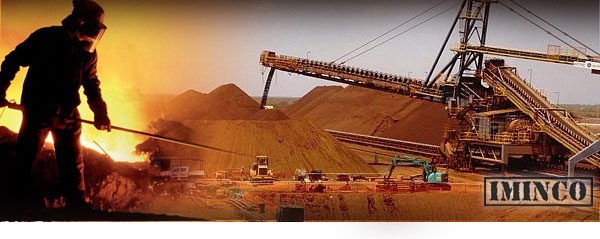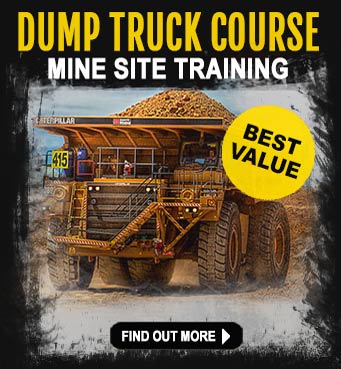 Mining companies in Australia are watching every cent they spend these days.
Mining companies in Australia are watching every cent they spend these days.
With increasing global competition and a volatile commodities price, it’s important for job seekers to be aware of mining costs.
Self-education is one of the most important factors when considering a mining career. Learning about the Australian mining industry and the many mining companies which operate here is�one of the�catalysts to being more employable.
Many thousands of people visit iMINCO.net each week looking for mining information. They seek out ways to help re-educate themselves and how to gain qualifications that will help them realise a mining job�and give them the�opportunity to make a good living.
Iron ore price drives mining jobs
One of the�most powerful�sectors of the mining industry in Australia is the iron ore industry which contributes to the growth of the Australian economy and creates hundreds of thousands of direct and indirect jobs.
Australia is naturally abundant in iron ore which has been formed over 600 million years and occurs in iron-rich sedimentary rocks known as banded iron formations (BIFs). Magnetite and haematite make up most of the Australia’s iron ore deposits, which are predominantly found in the North West Pilbara region of Western Australia. Iron ore mining is also carried out in South Australia, New South Wales and the Northern Territory.
At iMINCO, our editorial department researches the mining and resource sector looking for news and information to help Australians find mining employment.
Learn about Australian mining companies
One of the quickest ways to learn about the iron ore mining industry is to follow the big mining companies who have active mining operations in WA. That’s not to say there are not other companies who are worth following and who, together with the big miners, offer the best opportunities for uncovering where mining employment is at today and where it’s heading in the future.
“creating more jobs in their mines”
Australian mining companies are looking at their costs in 2014. Efficient mining operations are needed to keep the wheels turning and profitability in the black. One of the benchmarks for mining companies who are active in the iron ore industry is the price of iron ore. This one factor dictates whether a mining company will decide to re-invest in its mining operation, thereby creating more jobs in their mines – or not.
Over the years we have seen the price of iron ore drop from over $US300 a tonne, to around $US80 a tonne. This was due to many factors, however the slow-down in the Chinese economy was a big factor, as China imports around 70% of the world’s iron ore. At the time of writing, May 2014, the iron ore price is about $US106� a tonne. Back in December 2013, the iron ore price was $US135 a tonne – nearly a 21.5 per cent drop in 4 months.
“rely on profitability margins being high”
Mining companies rely on their profitability margins being high, which allows for�further growth and expansion. It was estimated that BHP lost $150 million dollars for each $1 price drop in the iron ore price. Take the 4 month drop of $29 per tonne and we can see instantly the losses are enormous.
“specialist mine workers needed”
It’s also not uncommon for the price or iron ore to rise again, however, Australian mining has reached a new phase in its lifecycle, as mining companies embrace new technologies and focus on running a lean and efficient mining operation. This�has also created another type of mine worker – the tech-savvy operator and specialist mine worker who is responsible for operating high-tech equipment and machinery.
Keeping watch over mining companies and their operating costs
As we said earlier, the benchmark for many mining companies is the price their customers are prepared to pay for their resources, in this case iron ore. Sustaining a profitable mining operation is the key focus for the big three miners, Riot Tinto, BHP and Fortescue Metals Group.
One of the well-respected financial networks recently reported on the big three miners. The information is useful to people who are willing to learn more about the challenges mining companies face in Australia.
“gain an advantage over other job seekers”
This knowledge in turn, can uncover some pretty good insights and reveal new ways to gain an advantage over other job seekers who are applying for the same jobs.
Fortescue Metals Group Limited
Fortescue Metals Group have had to take on massive loans over the years to allow the development of�their�four mining operations in the Pilbara. The FMGL Cloudbreak, Solomon, Kings and Firetail mines have contributed to the growth of the company and have allowed them to actually pay down some debt.
Despite these efforts, being a smaller company than Rio and BHP, Fortescue have higher iron ore mining production costs. Some analysts are indicating an iron ore price is looming somewhere in the region of $US80 a tonne and with production costs of�around $US72 a tonne, Fortescue will be investing in more ways to increase its mining operations efficiency.
Rio Tinto
Global miner Rio Tinto makes a large chunk of its earnings from iron ore, but because of its size maintains much lower production�costs than Fortescue. This is estimated to be about $US43 a tonne. Not only that, because of investments in new technology Rio are forecasting iron ore production of 295 million tonnes for 2014, which is up from the 65 million tonnes in 2013. Increasing production is one way mining companies can hope to offset the fallout from a weakening iron ore price.
BHP Billiton Limited
While BHP�derives a big part of its earnings from iron ore, the Australian mining company also has a diverse portfolio of mining and resource sector operations worldwide which also will help land a little softer than�their competitors�in Australia, should the iron ore price fall further.
While BHP is currently sitting on a debt of US$27.1 billion, the company continues to concentrate on improving productivity and reducing operating costs in its WA iron ore mines. It’s estimated their iron ore production costs are similar to Rio Tinto.
One of the biggest takeaways from all of this is that researching mining companies and discovering the challenges these companies face whilst operating their projects can�put you in front of others�in a job search. Understanding the fundamentals of the prices of iron ore, being aware of how mining companies are dealing with these fluctuations and what the future opportunities are for employment is critical knowledge for mining job seekers.
Mining jobs of the future
Today’s mining jobs will be more challenging to secure than they were 2 years ago. For people who still think they can walk into a $100,000 mining job without adding real value to a mining company should think again.
There are still thousands of jobs in the mines going every day. Mining jobs boards are teeming with jobs, from entry-level mining jobs, to machinery operators, engineers and specialists like electricians, diesel fitters and health and safety personnel.
Talk to a mining consultant and see what types of mining jobs you can do with the right training course under your belt.

You need training and the relevant qualifications to even be considered for a mining position. All online applications for jobs are first passed through special software that scans� resumes looking for relevant ‘keywords’ and qualification codes that are relevant to the job being advertised.
If the resume has a low count of ‘keywords’, then it may end up in the computer ‘recycle bin’.
To learn how to stop this happening, get the iMINCO Resume Tips�and Beating Resume Scanner Software�e-books – they’re free.



